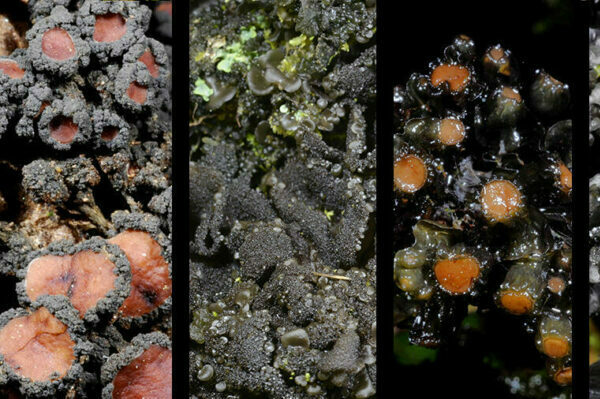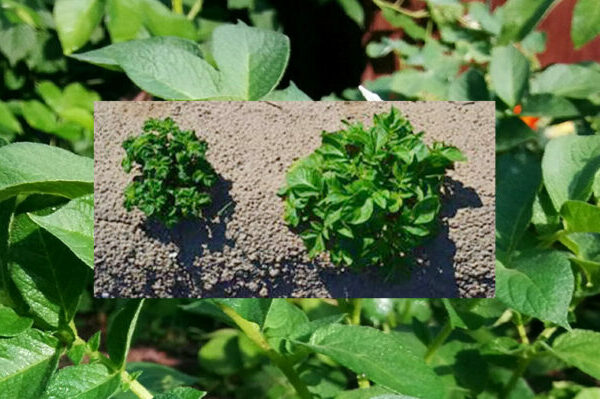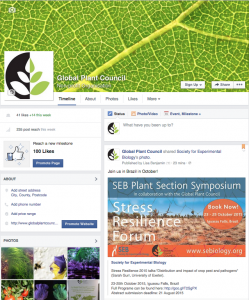







This week we speak to Professor Stefan Jansson, Umeå University, Sweden, who is the President of one of the Global Plant Council member organizations, the Scandinavian Plant Physiology Society (SPPS). He tells us more about his fascinating work, his prominent role in the GM debate, and his thoughts on the work of the SPPS and GPC, both now and in the future.
Could you tell us a little about your areas of research interest?
I have worked on (too) many things within plant science, but now I am focused on two subjects: “How do trees know that it is autumn?”, and “How can spruce needles stay green in the winter?” We use several approaches to answer these questions, including genetics, genomics, bioinformatics, biochemistry and biophysics.
Your ground-breaking work on CRISPR led to you being awarded the Forest Biotechnologist of the Year award by the Institute of Forest Biosciences. Could you tell us more about this work, and the role you have played in the GM debate?
In our work on photosynthetic light harvesting, we have generated and/or analyzed different lines lacking an important regulatory protein; PsbS. PsbS mutants resulting from treatment with radiation or chemical mutagens can be grown anywhere without restriction, but those that are genetically modified by the insertion of disrupting ‘T-DNA’ are, in reality, forbidden to be grown. For years, I, and many other scientists, have pointed out that it does not make sense for plants with the same properties to be treated so differently by legislators. In science we treat such plants as equivalents; when we publish our results we could be required to confirm that the correct gene was investigated by using an additional T-DNA gene knock-out line or an RNAi plant (RNA interference, where inserted RNA blocks the production of a particular protein), but in the legislation they and the ‘traditionally mutated’ plants are opposites.
This has been the situation for many years, but it has been impossible to change. To challenge this, we set up an experiment using a targeted gene-editing approach called CRISPR/Cas9 to make a deletion in the PsbS gene, which resulted in a plant with a non-functional PsbS gene but no residual T-DNA. We asked the Swedish competent authority if this would be treated as a GM plant or not, arguing that it is impossible to know if it is a ‘traditional’ deletion mutant or a gene-edited mutant. In the end, the authority said that, according to their interpretation of the law, this cannot be treated as a GMO.
If this interpretation is also used in other countries, plant breeders will have access to gene-editing techniques to aid them in their work to generate new varieties, which would otherwise not be a possibility. The reason we did this was to provide the authorities with a concrete case, and one which was not linked to a company or commercial crop but rather something that everyone would realize could only be important for basic science. Therefore most of the arguments that are used against GMOs could not be used, and this should be a step forward in the debate.
 You are the President of the Scandinavian Plant Physiology Society, one of the Global Plant Council member organizations. Could you briefly outline the work of the SPPS?
You are the President of the Scandinavian Plant Physiology Society, one of the Global Plant Council member organizations. Could you briefly outline the work of the SPPS?
We support plant scientists – not only plant physiologists – in the Nordic countries, organize meetings, publish a journal (Physiologia Plantarum), etc.
What are the most important benefits that SPPS members receive?
This is an issue that we discuss a lot in the society right now. Only a limited fraction of Nordic plant scientists are members – obviously are the benefits not large enough – and this is something that we intend to change in the coming years. We think, for example, that we need to be a better platform for networking between researchers and research centers, and have a lot of ideas that we would like to implement.
How does the GPC benefit the SPPS?
Although there are country- and region-specific issues important for plant scientists, the biggest issues are global. The arguments why we need plant science are basically the same whether you are a plant scientist in Umeå or Ouagadougou, therefore we all benefit from a global plant organization.
What do you see as important roles for the future of the GPC, both for SPPS and the wider community?
This is quite clear to me: we will contribute to saving the planet.
What advice would you give to early career researchers in plant science?
Your curiosity is your biggest asset, so take good care of it.
Is there anything else you’d like to add?
The challenge for the GPC is clearly to get enough resources to be able to fulfil its very worthwhile ambitions. GPC has made a good start: the vision is clear and the roadmap is there, which are two prerequisites, but additional resources are needed to employ people to realize these ambitions, build upon current successes, and perform the important activities. It is easy to say that if we all contribute with a small fraction of our time that would be sufficient, but we all have may other obligations and commitments, and a few dedicated people are needed in all organizations.
Today is Ada Lovelace Day, an international celebration of women in science, technology, engineering and maths (STEM) in honor of Ada Lovelace, the first computer programmer.
To highlight the achievements of women in STEM we’ve spoken to female plant scientists around the world about their careers and experiences. Read on for the first of two posts:
Associate Professor Lum A. Fontem
University of Buea, Cameroon, and Women Representative of the African Crop Science Society.
Could you give a brief overview of your research?
I have always had the desire to carry out research that is oriented towards solving the problems of resource-poor farmers, which led me towards my areas of interest; weed science, agronomy, management of post-harvest losses and phytoremediation. I work with many crops, including cereals, legumes, vegetables, roots and tubers.
The major output of my work has been the adoption of technologies that have led to an improvement of livelihoods, food security and increased household incomes.
Have you faced any challenges as a woman in science?
Occasionally I face the challenges that women go through because of their gender, but I have always stood my ground. My parents encouraged me to go to school and provided for my needs, and I won awards, all of which helped me to sail through smoothly.
What would you say is the general experience of women in science in Cameroon?
In Cameroon, the policy of gender equality has received a strong impetus from government and women are encouraged in the area of science, however there are still domains that women still have to break through.
What are your goals for the future?
I hope to train more weed scientists that can respond to the multifarious challenges of food production.
Professor Cornelia Spetea Wiklund
University of Gothenburg, Sweden, and Council Member of the Scandinavian Plant Physiology Society.
What is the subject of your research?
My research focuses on the solute transport network from the thylakoid membrane of Arabidopsis thaliana. We also study the impact of mycorrhiza symbiosis on photosynthesis in the model legume Medicago truncatula.
How has your career progressed?
My PhD at the University of Szeged, Hungary, and postdoc at Stockholm University, Sweden, focused on the proteolytic mechanisms in thylakoid membranes during light stress. I moved to Linköping University, Sweden, where I got funding from the Swedish Research Council to build my own research group working on my current areas of interest. I have been a Professor of Plant Cell Physiology at the University of Gothenburg for the past 4.5 years.
Have you dealt with any specific challenges as a woman in science?
Of course. I gave birth to two children in my first years as group leader. The major challenge was how to manage my group and raise the children at the same time, even though my husband took over quite a lot of the family responsibilities. On one hand, I have become a very good ‘manager’ of my time, but on the other, I have missed a lot of my children’s development. Another challenge was to learn to understand how my male colleagues think and undertake management in science.
How does Sweden help women in science to succeed?
Sweden, as other Scandinavian countries, is known for a generous parental leave system, which allows the father to be at home for at least 60 out of 480 days. Day care is heavily subsidized by the state and accepts children over a year old. These advantages allow many female scientists in Sweden to have children during their PhD or later on in their career. However, the ‘price’ may be that the young female group leaders with small children at home experience delays in their career development as compared with male colleagues of similar age.
A survey at my institution in Gothenburg revealed additional causes for delayed career success, such as poor networking and visibility of young females in various scientific forums. Remarkably, according to the same survey, there is not much difference in career development between senior male and female scientists.
What do you hope to achieve in the future?
I will continue my research on the regulation of photosynthesis since I find it fascinating and because I believe this can bring solutions to many of the problems with crop productivity within the context of increasing human population and depleted resources. I also aim to spend more time with my children at least in the coming five years, before they leave home to continue their studies.
Thank you to both Associate Professor Lum Fontem and Professor Cornelia Spetea Wiklund for taking the time to discuss their experiences with us.
Please leave a comment below and describe any challenges or opportunities you have observed for women in science in your country!
The 26th Scandanavian Plant Physiology Society (SPPS) Congress took place from the 9th – 13th August at Stockholm University. Celia Knight attended the meeting and has written a report for the blog this week, so that those of you who couldn’t attend are up to speed!
A diversity of speakers and topics
Attending SPPS 2015 was a fantastic opportunity to hear about progress across a really broad spectrum of plant biology research. The program included sessions on development, epigenetics and gene regulations, high-throughput biology, photobiology, abiotic stress, education and outreach, and biotic interactions. There really was something for everyone! Additionally, the organizers had made a notable effort to include a good mix of both established and early career researchers, further adding to the diversity of talks on offer.
I was struck by the contributions from the various Society awards so will focus on these.
SPPS awards
Gunnar Öquist (Umeå University, Sweden) was given the SPPS Award in recognition of his outstanding merited contribution to the science of plant biology. His talk entitled “My view of how to foster more transformative research” provided a reminder that the dual aims of research, both to solve problems and to seek new knowledge, are very important if global challenges are to be met.
The SPPS early career award recognizes a highly talented scientist who has made a significant contribution to Scandinavian plant biology. This year two early career awards were given. The first recipient, Ari-Pekka Mähönen (University of Helsinki, Finland), received the award for his work on growth dynamics in Arabidopsis thaliana, and showed some amazing sections to follow cambium development. Nathaniel Street (Umeå University, Sweden) also received an award for his work “Applying next generation sequencing to genomic studies of Aspen species and Norway Spruce”. Both gave great talks including strong research in these areas; it was great to see upcoming researchers take the spotlight and give us a glimpse to the future of plant biology.
Torgny Näsholm (SLU, Umeå Sweden) was awarded the Physiologia Plantarum award. This award is given to a scientist that has made significant contribution to the areas of plant science covered by the journal Physiologia Plantarum. Torgny uses microdialysis, a technique currently used by neuroscientists, to investigate the availability of soil nitrogen to plants. Data generated using this technique are now bringing into question our current view of nitrogen availability measured using traditional methods.
The Popularisation prize, awarded to Stefan Jansson (Umeå University, Sweden), recognizes significant contributions to science communication and public engagement. Stefan’s work in public engagement has been wide-ranging. He has been involved with The Autumn Experiment, a citizen science project engaging schools in observation, data collection and real research. Recently Stefan published a book in Sweden, called ‘GMO’, which tackles the response of societies to genetically modified organisms.
At the congress, Stefan took over as the new President of the SPPS. This could lead to further emphasis and resources being placed on communicating science as the society moves forward.
Poster prizes
Prizes for the best posters are also awarded at the meeting. Five judges, including myself, assessed the posters, and the competition was fierce. It was impossible to split the top prize, so joint 1st prizes were awarded to Veli Vural Uslu (Heidelberg University, Germany) on “Elucidating early steps of sulfate sensing mechanisms by biosensors” and to Timo Engelsdorf (Norwegian University of Science and Technology, Norway) for “Plant cell wall integrity is maintained through cooperation of different sensing mechanisms”. Joint second prizes went to Zsofia Stangl (Umeå University, Sweden) on “Nutrient requirement of growth in different thermal environments” and to Annika Karusion (University of Tartu, Estonia) for “Circadian patterns of hydraulic and xylem sap properties: in situ study on hybrid aspen.”
Additional activities
Like any meeting, SPPS wasn’t all work and no play! Lisbeth Jonsson (Stockholm University, Sweden) and her team organized an excellent program. I feel very fortunate, on this short trip, to have had the opportunity to view Stockholm’s fine City Hall where Nobel laureates have dined, as well as the incredibly preserved Vasa ship, which sank in Stockholm bay on its maiden voyage in 1628.
I very much look forward to seeing how the society progresses in the future, and nurturing new friendships and collaborations I made at the congress.
 – we’re even helping to develop a new social media platform just for plant scientists! As well as this blog, we also have two Twitter accounts: our main, English-language account is at @GlobalPlantGPC, to which myself (@lisaamartin1), Ruth (@plantscience), and GPC New Media Fellows Amelia (@AmeliaFrizell) and Sarah (@josesci) all contribute. Alternatively, if you speak Spanish we also have a Spanish-language account at @GPC_EnEspanol (operated by Ecuadorian-PhD-student-in-Germany Juan-Diego Santillana-Ortiz; @yjdso, who kindly translates our tweets).
– we’re even helping to develop a new social media platform just for plant scientists! As well as this blog, we also have two Twitter accounts: our main, English-language account is at @GlobalPlantGPC, to which myself (@lisaamartin1), Ruth (@plantscience), and GPC New Media Fellows Amelia (@AmeliaFrizell) and Sarah (@josesci) all contribute. Alternatively, if you speak Spanish we also have a Spanish-language account at @GPC_EnEspanol (operated by Ecuadorian-PhD-student-in-Germany Juan-Diego Santillana-Ortiz; @yjdso, who kindly translates our tweets).
We find Twitter a great way to share links, news, journal articles and conference updates, while also networking with the global plant science community. Join over 1000 other plant scientists and enthusiasts and follow us, if you’re not already!
If you’re not sure where to start with Twitter, Mary Williams from ASPB (@PlantTeaching) has written a great two-part blog (we feature in Part 1! And here’s Part 2) that will help you get started and understand the ‘twetiquette’ of tweeting, especially from conferences.
Although Facebook is by far the most popular social networking site across the globe, the way we use it has evolved dramatically since its inception in 2004. ‘Thefacebook’ as it was first known, was famously founded by Harvard University student Mark Zuckerberg as a way for his fellow students to view and comment on photographs of their dorm-mates. Initially restricted to Harvard, the website soon expanded to universities across the US, then the world, and now almost anyone can use it, even without an academic email address.
 But Facebook has moved on from its early days and it’s now not all about ‘poking’ your friends (remember that?!). Now worth billions of dollars, Facebook has morphed into an all-encompassing platform for both recreation and business. While many people still use Facebook to keep in touch with friends and family, share photos and status updates, it’s also increasingly being used to share news, articles and opinions, to play games, form groups or communities, and as a tool for companies and organizations to interact with and advertise to customers or members.
But Facebook has moved on from its early days and it’s now not all about ‘poking’ your friends (remember that?!). Now worth billions of dollars, Facebook has morphed into an all-encompassing platform for both recreation and business. While many people still use Facebook to keep in touch with friends and family, share photos and status updates, it’s also increasingly being used to share news, articles and opinions, to play games, form groups or communities, and as a tool for companies and organizations to interact with and advertise to customers or members.
At the Society for Experimental Biology conference in Prague in June, I heard several scientists extolling the benefits of social media, particularly – and perhaps unsurprisingly – in the Education and Outreach sessions. I was particularly interested to repeatedly hear the message that Facebook is a very useful tool for science communication and outreach – so we’ve decided to try it!
Having only ever used Facebook for personal uses, Sarah and I asked some prolific social media users for their advice on starting and using a Facebook page, and in answer to the question, “Why should we bother with Facebook?”, the overwhelming message was clear: Facebook is used by more, different people.
Compared to Twitter, which has around 316 million users, Facebook reached its 1 billionth account in 2012, and while the people we spoke to find that most of their Twitter followers are from English-speaking countries, their Facebook visitors represent a much broader range of geographic locations and languages. Furthermore, unlike setting up and maintaining a website, it’s free to set up Facebook pages or groups, so some organizations only exist on social media. By setting up a Facebook page for the GPC, we should, in theory, be able to interact with more people than we would with just our Twitter accounts and blog, thus we will be able to share and promote plant science all over the world more effectively and to a greater diversity of people.
If you’re attending our SEB Plant Section Symposium on Stress Resilience, you can also let us know by joining our Facebook event! (Please note however, that saying you’re coming to the meeting on Facebook is not the same as registering! You’ll need to do that here.)
Here’s a list of some of our Member Organizations who also have a presence on Facebook. Let us know if there are any other pages we should ‘like’! We’re also interested to hear from you if you have any thoughts about using social media, or suggestions of content you would like to see on Facebook. How do you use Twitter and Facebook, and how does your use of these channels differ, if at all? Please comment below!